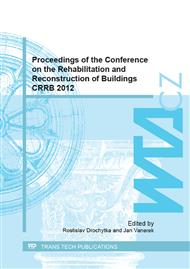p.3
p.10
p.20
p.27
p.37
p.45
p.54
p.60
Efficiency of Liquidation of Biotic Pests Using Microwave Radiation
Abstract:
Microwaves are electromagnetic waves of frequencies from 300 MHz to 300 GHz, corresponding to wavelengths from 1 m to 1 mm. For industrial application is allowed more frequencies, but we are mainly interested in the frequency 2 450 MHz, a wavelength of 12,2 cm, which we use in our applications. The heating occurs so that the electric field in the water molecules orient themselves according to polarization. Microwaves are a classical electromagnetic radiation with frequency lower than the solar radiation and therefore leave no residual radiation harmful to health. Using the device is completely safe, damage to health can occur only by direct irradiation of a few cm for several minutes, either intentionally or careless handling of the machine.
Info:
Periodical:
Pages:
27-36
Citation:
Online since:
May 2013
Keywords:
Price:
Сopyright:
© 2013 Trans Tech Publications Ltd. All Rights Reserved
Share:
Citation:


